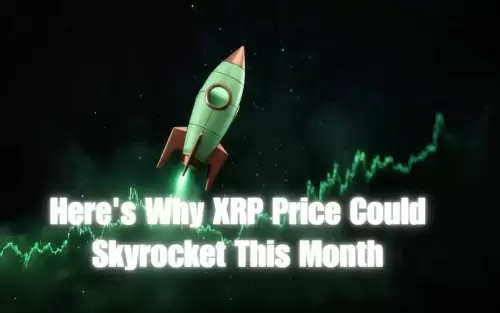 |
|
 |
|
 |
|
 |
|
 |
|
 |
|
 |
|
 |
|
 |
|
 |
|
 |
|
 |
|
 |
|
 |
|
 |
|
암호화폐 뉴스 기사
France Payments Forum 이벤트에서 ECB의 집행위원회 위원 인 Piero Cipollone의 연설“디지털 유로와 유럽의 미래 지불”
2025/05/15 15:16
프랑스 지불 포럼 이벤트“디지털 유로와 유럽의 미래 지불”에서 ECB의 집행위원회 위원 인 Piero Cipollone 의이 연설

The France Payments Forum event “Digital euro and the future of payments in Europe”
프랑스 지불 포럼 이벤트“디지털 유로와 유럽의 지불 미래”
Paris, 15 May 2025
파리, 2025 년 5 월 15 일
Good morning everyone.
모두 좋은 아침.
It is a pleasure to be joining you today at France Payments Forum's event on the digital euro and the future of payments in Europe.
디지털 유로에 관한 프랑스 지불 포럼 (France Payments Forum)의 이벤트와 유럽에서의 미래의 미래에 참여하게되어 기쁩니다.
Most people associate the adoption of the euro with the launch of euro banknotes and coins. While the euro was introduced for accounting purposes in 1999, we tend to feel it only became our money three years later once we started paying in euro cash around Europe. Euro banknotes and coins made the currency the tangible symbol of a united Europe.
대부분의 사람들은 유로의 채택을 유로 지금 및 동전의 출시와 연관시킵니다. 유로는 1999 년에 회계 목적으로 도입되었지만 유럽 주변에서 유로 현금으로 지불하기 시작한 후 3 년 후에 우리의 돈이 된 경향이 있습니다. 유로 지폐와 동전은 통화를 유럽의 유형의 상징으로 만들었습니다.
A strong currency also comes in tandem with strong payment systems. We at the central bank offer payment infrastructures that form the plumbing of the financial system. Less visible than banknotes and coins, these infrastructures are nevertheless key to our monetary and financial integration.
강력한 통화는 또한 강력한 지불 시스템과 함께 제공됩니다. 중앙 은행의 우리는 금융 시스템의 배관을 형성하는 지불 인프라를 제공합니다. 지폐 및 동전보다 눈에 띄지 않는이 인프라는 금전적 통합의 핵심입니다.
Retail and wholesale payments are hence an integral part of our tasks at the central bank. We issue cash, supply reserves – the ultimate liquid asset – to banks and operate payment systems, thereby supporting our economy by enabling euro area transactions that are secure, risk-free and European. This is what preserves our economic stability and our monetary sovereignty.
따라서 소매 및 도매 지불은 중앙 은행의 업무의 필수 부분입니다. 우리는 현금, 공급 준비금 (최고의 액체 자산)을 은행 및 운영 시스템에 발행하여 안전하고 위험이없고 유럽인 유로 지역 거래를 가능하게하여 경제를 지원합니다. 이것이 우리의 경제 안정성과 금전적 주권을 보존하는 것입니다.
Building on this reliable base, private sector firms can then offer their own solutions, without their customers having to worry about the money they use. One euro is one euro, because private money can be converted to cash at all times and because financial transactions can be settled in central bank money – the only risk-free asset there is.
민간 부문 회사는이 신뢰할 수있는 기반을 바탕으로 고객이 사용하는 돈에 대해 걱정하지 않고 자체 솔루션을 제공 할 수 있습니다. 개인 자금은 항상 현금으로 전환 될 수 있고 금융 거래를 중앙 은행 자금으로 해결할 수 있기 때문에 하나의 유로는 1 유로입니다.
So today, I want to focus on how we can make our currency future-proof and enhance the integration, competitiveness and resilience of European payments in the digital era.
그래서 오늘 저는 통화를 미래를 방지하고 디지털 시대의 유럽 지불의 통합, 경쟁력 및 탄력성을 향상시키는 방법에 집중하고 싶습니다.
As people increasingly prefer to pay digitally and online commerce expands, the role of cash as a universal payment solution is declining. We thus risk being left without a European solution that allows us to pay throughout the euro area in all situations. To restore the central role of cash, we need to complement physical cash with its digital equivalent, a digital euro. Making central bank money available in digital form might seem like a small and obvious step, but it is in fact an essential one for overcoming the entrenched and longstanding fragmentation of our payment market. The digital euro will achieve this directly by modernising the supply of public money and indirectly through its infrastructure and acceptance network, which private payment service providers can leverage to expand and innovate on a European scale. Ultimately, a digital euro will enhance the competitiveness of European providers and their ability to offer all types of digital payments to European consumers.
사람들이 점점 더 디지털 방식으로 지불하고 온라인 상거래가 확대되는 것을 선호함에 따라 보편적 인 지불 솔루션으로서의 현금의 역할은 감소하고 있습니다. 따라서 우리는 모든 상황에서 유로 지역 전반에 걸쳐 지불 할 수있는 유럽 솔루션없이 남을 위험이 있습니다. 현금의 중심 역할을 복원하려면 디지털 상당의 디지털 유로로 물리적 현금을 보완해야합니다. 중앙 은행 자금을 디지털 형태로 제공하는 것은 작고 명백한 단계처럼 보일 수 있지만, 실제로 지불 시장의 확고하고 오랜 단편화를 극복하는 데 필수적입니다. 디지털 유로는 공공 자금의 공급을 현대화하고 인프라 및 승인 네트워크를 통해 간접적으로이를 달성 할 것입니다. 이는 개인 지불 서비스 제공 업체가 유럽 규모로 확장하고 혁신 할 수있는 인프라 및 수락 네트워크를 통해 간접적으로이를 달성 할 것입니다. 궁극적으로 디지털 유로는 유럽 공급 업체의 경쟁력과 유럽 소비자에게 모든 유형의 디지털 지불을 제공 할 수있는 능력을 향상시킬 것입니다.
The situation is different for wholesale financial transactions as we already offer settlement in digital central bank money and do not face the same dependencies. However, market participants increasingly expect that tokenisation and distributed ledger technology (DLT) will transform financial transactions by enabling assets to be issued or represented as digital tokens. We are currently expanding our initiative to settle DLT-based transactions in central bank money. By making central bank money available, we avoid the risk of other settlement assets being used, such as US dollar stablecoins, which would reintroduce credit risk, fragmentation and a dependency on non-European solutions.
우리는 이미 디지털 중앙 은행 자금에 합의를 제공하고 동일한 의존성에 직면하지 않기 때문에 도매 금융 거래의 상황이 다릅니다. 그러나 시장 참가자들은 토큰 화 및 분산 원장 기술 (DLT)이 자산을 디지털 토큰으로 발행하거나 대표하여 금융 거래를 변화시킬 것으로 기대하고 있습니다. 우리는 현재 중앙 은행 자금으로 DLT 기반 거래를 해결하기위한 이니셔티브를 확장하고 있습니다. 중앙 은행 자금을 이용할 수있게함으로써, 우리는 신용 위험, 단편화 및 비 유럽 솔루션에 대한 의존성을 다시 도입 할 수있는 미국 달러 stablecoin과 같은 다른 결제 자산이 사용될 위험을 피합니다.
We are progressing on the retail and wholesale fronts in parallel. In both cases, Europe needs its own, sovereign money for the digital era, so that it can harness the benefits of integration, innovation and independence. In the words of the late French economist Michel Aglietta, money is not just a technical device, it is an essential institution.[1]
우리는 소매 및 도매 전선을 동시에 진행하고 있습니다. 두 경우 모두 유럽은 디지털 시대를위한 자체 주권 자금이 필요하므로 통합, 혁신 및 독립의 이점을 활용할 수 있습니다. 프랑스 경제학자 Michel Aglietta의 말에 따르면, 돈은 단순한 기술 장치가 아니라 필수 기관입니다. [1]
A digital euro for everyday payments
일상적인 지불을위한 디지털 유로
Let me first discuss the rationale for the digital euro and the benefits it will bring.
먼저 디지털 유로에 대한 이론적 근거와 그것이 가져올 혜택에 대해 논의하겠습니다.
Currently, cash is the sole sovereign payment method across the euro area. It offers Europeans a convenient, secure and universally accepted way to pay and store value, ensuring financial inclusion. Cash also upholds the resilience of our payment systems and economies, acting as a reliable fallback during crises such as cyberattacks or power outages. This is why we remain strongly committed to cash.[2]
현재 현금은 유로 지역의 유일한 주권 지불 방법입니다. 유럽인들에게 편리하고 안전하며 보편적으로 가치를 지불하고 상점 할 수있는 방법을 제공하여 재정적 포용을 보장합니다. 현금은 또한 우리의 지불 시스템과 경제의 탄력성을지지하며, 사이버 공격이나 정전과 같은 위기 동안 신뢰할 수있는 폴백 역할을합니다. 이것이 우리가 현금에 크게 헌신하는 이유입니다. [2]
However, digital payments have gained popularity, with online shopping accounting for more than a third of our retail transactions. This means that acceptance of and access to cash are no longer sufficient to cover a growing share of payment situations. In value terms, cash payments made up only 24% of day-to-day payments in the euro area last year.[3]
그러나 온라인 쇼핑은 소매 거래의 3 분의 1 이상을 차지하면서 디지털 지불이 인기를 얻었습니다. 이는 현금의 수락 및 접근이 더 이상 점점 더 많은 지불 상황을 충당하기에 충분하지 않다는 것을 의미합니다. 가치 측면에서, 현금 지불은 작년 유로 지역에서 일상적인 지불금의 24% 만 구성됩니다. [3]
Lacking a genuine European payment solution that works across the euro area, we are left critically dependent on foreign payment providers.[4] Currently, nearly two-thirds of euro area card-based transactions are processed by non-European companies while 13 euro area countries depend entirely on international card schemes or mobile solutions for in-store payments.[5] And even where national card schemes are available, they require co-badging with international card schemes to facilitate cross-border payments within the euro area or online shopping. Moreover, mobile apps and e-payment solutions are dominated by foreign solutions like PayPal, Apple Pay or Alipay. And they partner
유로 지역에서 작동하는 진정한 유럽 지불 솔루션이 없기 때문에 우리는 외국 지불 제공 업체에 크게 의존하고 있습니다. [4] 현재 유럽 지역 카드 기반 거래의 거의 3 분의 2가 비 유럽 기업에서 처리되는 반면, 13 유로 지역 국가는 전적으로 매장 내 지불을위한 국제 카드 제도 또는 모바일 솔루션에 의존합니다. [5] 국립 카드 제도를 이용할 수있는 경우에도 유로 지역 또는 온라인 쇼핑 내에서 국경 간 지불을 용이하게하기 위해 국제 카드 제도와 공동 배출해야합니다. 또한 모바일 앱 및 전자 지불 솔루션은 PayPal, Apple Pay 또는 Alipay와 같은 외국 솔루션에 의해 지배됩니다. 그리고 그들은 파트너입니다
부인 성명:info@kdj.com
제공된 정보는 거래 조언이 아닙니다. kdj.com은 이 기사에 제공된 정보를 기반으로 이루어진 투자에 대해 어떠한 책임도 지지 않습니다. 암호화폐는 변동성이 매우 높으므로 철저한 조사 후 신중하게 투자하는 것이 좋습니다!
본 웹사이트에 사용된 내용이 귀하의 저작권을 침해한다고 판단되는 경우, 즉시 당사(info@kdj.com)로 연락주시면 즉시 삭제하도록 하겠습니다.






























































